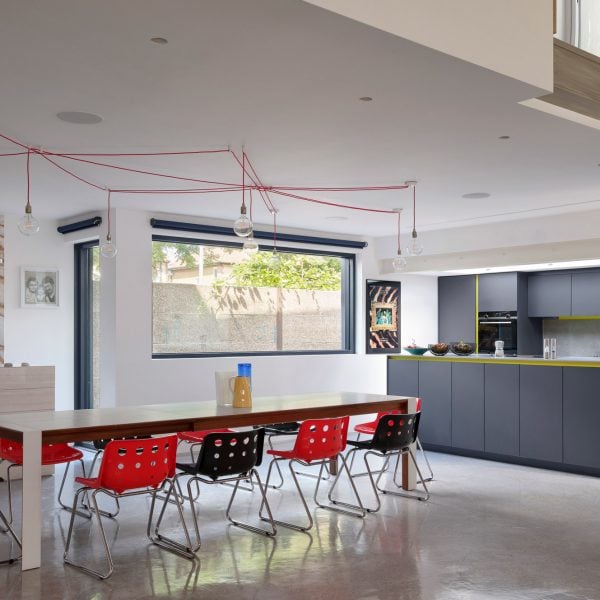[ad_1]
A dark grey roof shaped like an armadillo’s shell peeks out behind a row of terraced houses on Station Lodge, a home in southwest London designed by local architectural studio Lacey & Saltykov.
Named after its location overlooking Motspur Park station in Merton, the house was built for co-founder Andrei Saltykov’s own family and has been “future-proofed” with a design that will allow it to be divided up in the future.
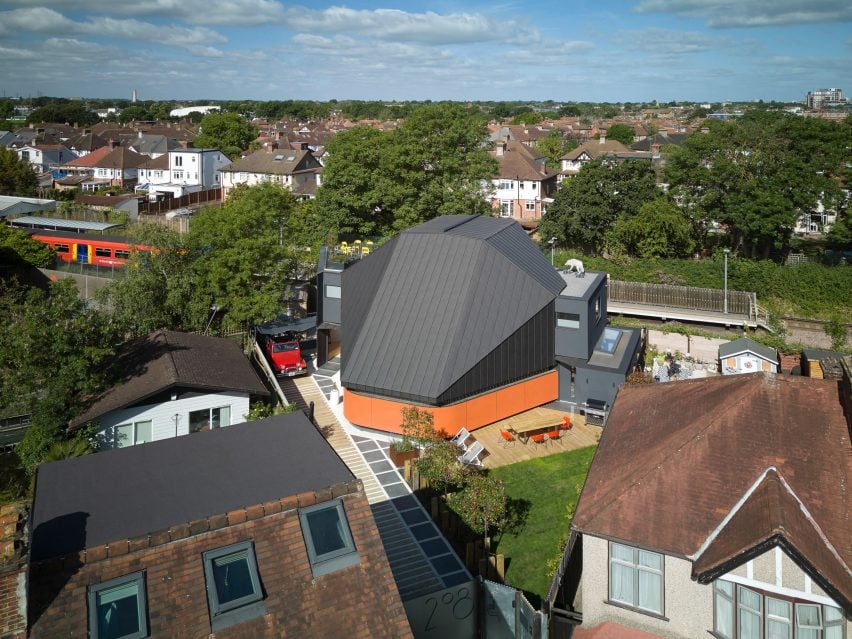
Twice as big as neighbouring properties, with a total floor space of 280 square metres, the architect designed the house to follow the geometry of its triangular-shaped plot – formerly a row of old garages.
Its atrium-like living area has been positioned at the front of the site, while the bedrooms and roof terraces look out over the railway line behind. These were clad with dark exterior walls to conceal the dust from passing trains and reduce maintenance.
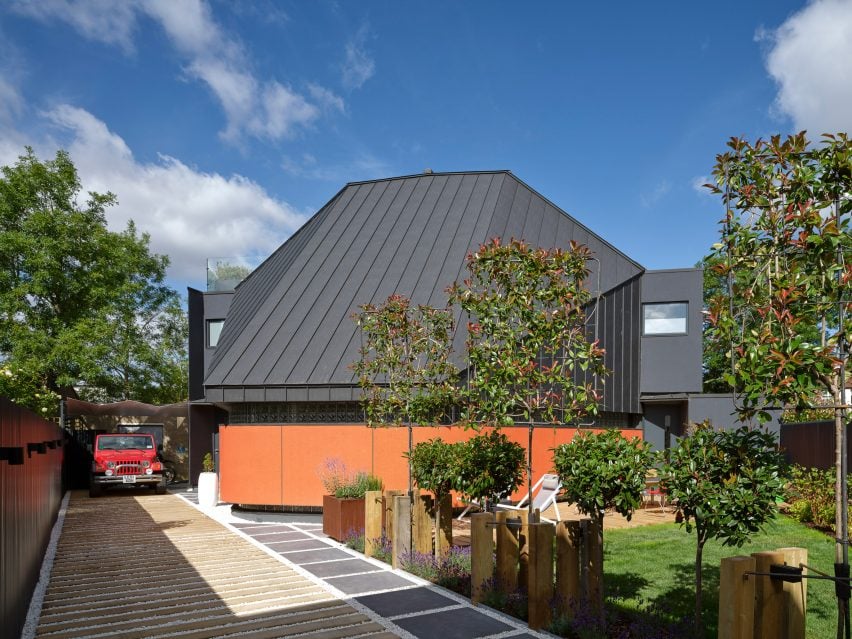
According to Saltykov, the intent was to create a communal space that was as “visually striking as possible” and compensate for the loss of an incredible view from the family’s living room in their old house.
“The outside of the house doesn’t reveal much”, said Saltykov. “But inside the main space is extraordinary. While the house is enormous it still feels domestic, and it doesn’t overwhelm.”
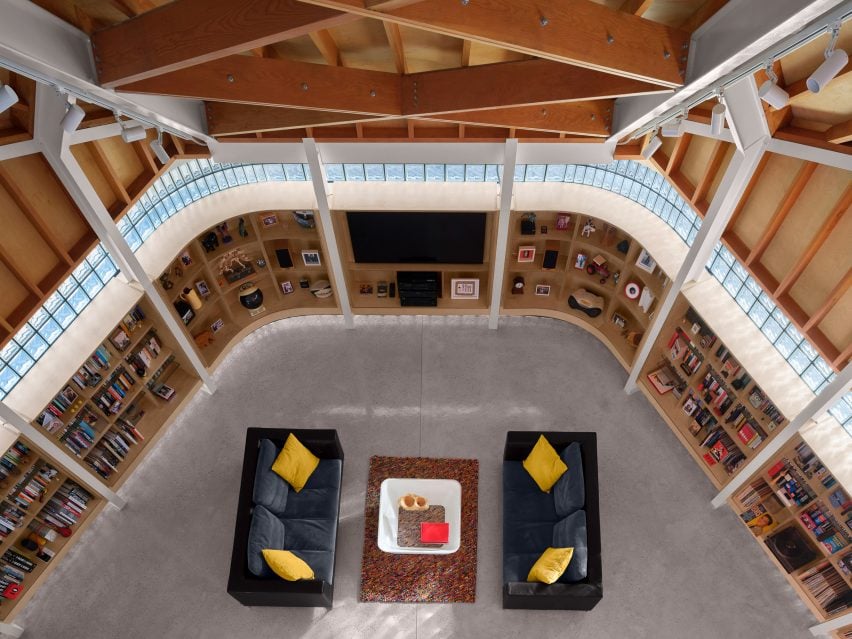
The triple-height living room is covered with an angled metal roof made of standing seam metal, which sails over both the first-floor bedrooms and a home office on the second floor that opens out onto a sundeck.
When seen from inside, the roof’s shell structure is exposed revealing its “complex” geometry and its Douglas fir and steel construction, designed in collaboration with London structural engineers Foster Structures.
The living area also features a “continuous” library running around the walls and a utilitarian red staircase that leads to the bedrooms on the first floor. These have been designed with heavy block-work and oblique windows to reduce noise from the train line.
The nearby railway has been referenced in other areas of the design, with reclaimed wooden sleepers repurposed as driveway paving and tree planters in the front garden. Pre-fabricated concrete panels from the old garages on site were also reused to build a new fence along the railway edge.
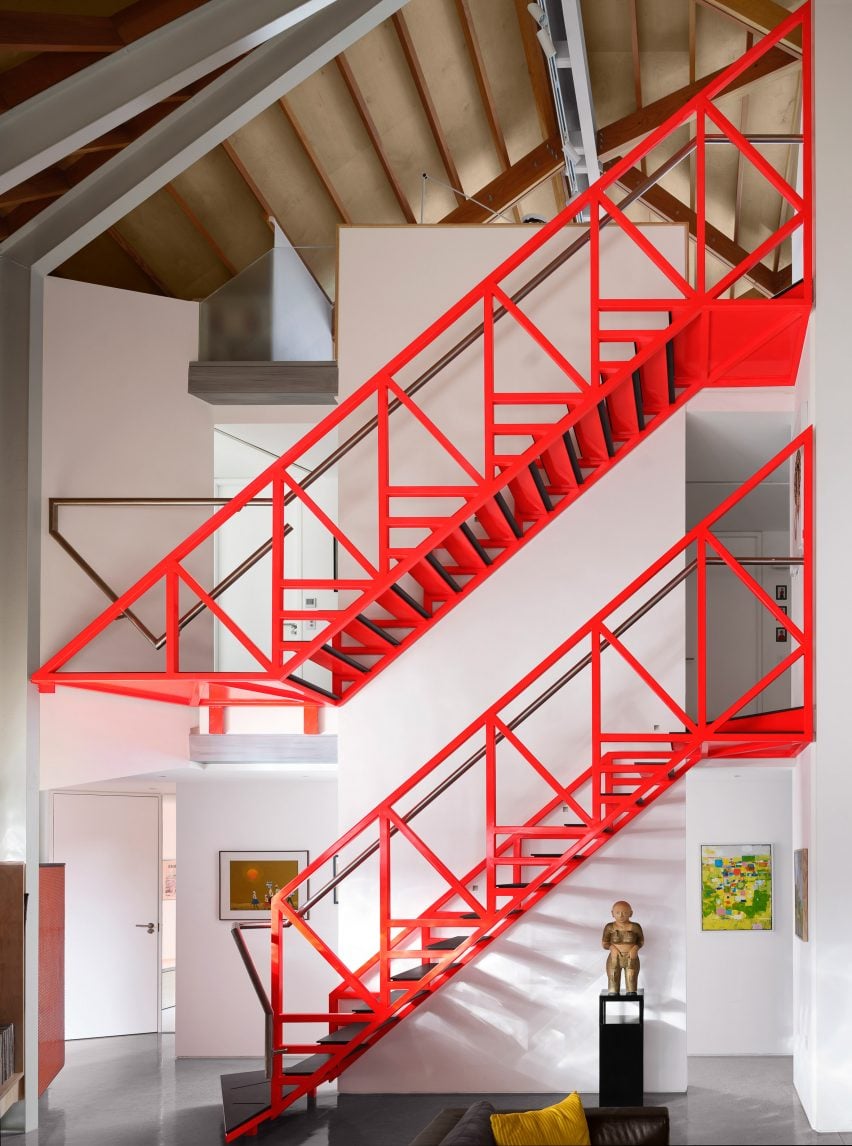
Alongside the roof-level office space is another living area with access to a south-facing terrace guarded by a wolf sculpture made of recycled materials, by local artist Kevin Herlihy. In addition to an external dining deck, there are two small concealed rear gardens, one for adults and one for children.
The bedrooms designed for Saltykov’s two daughters are identical creating a more “equitable” arrangement than their old house where the rooms were different shapes and sizes. There is also more room for them to study and a “snug” for their friends to come over and visit.
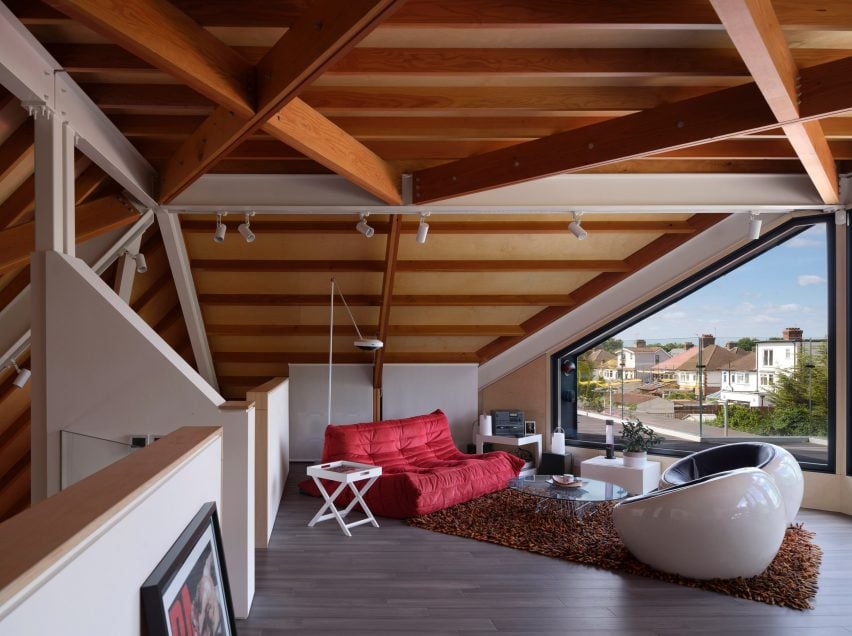
With one eye on the future, the architect has “future-proofed” the house with services such as plumbing and drainage points included for two separate houses. Foundations have already been put in place for a second staircase.
This means one day it can be divided up into two separate homes either for his daughters to live in, or should the family decide to sell up.
Other London houses recently featured on Dezeen include a Polysmiths project with structural arches and a residence featuring a dark patinated copper roof by Jason Good Architecture.
The photography is by Will Pryce.
[ad_2]
Source link

